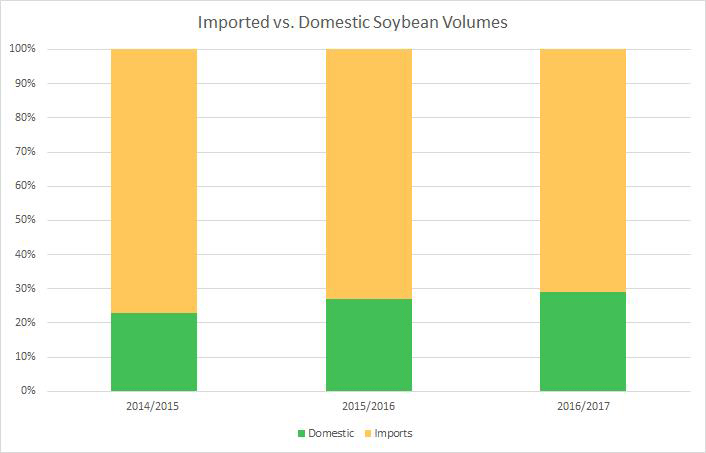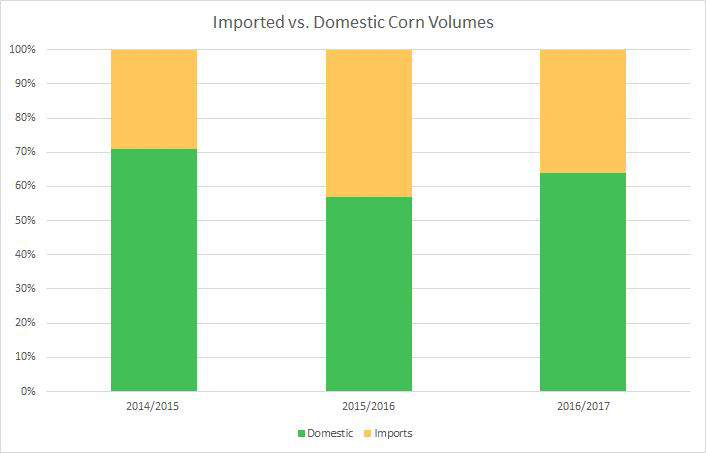By Kellee James and Rachel Storey, Mercaris
Over the past five years—since Mercaris began tracking prices of organic and non-GMO grains—domestic demand for organic grains has grown significantly. U.S. certified farmland, on the other hand, still falls significantly short of being able to fulfill that demand. This increasing gap in the supply chain has been filled by imports; however, the fast and sizeable growth in grain imports has brought with it documentation of fraud within the system. While there are now several efforts underway to combat these issues, it is important to be able to quantify what is currently being imported. From farmers to regulators, understanding the current supply-demand picture is key.
While we hesitate to attribute any recent import trends as fallout from revelations of fraud (made public in the Washington Post in May), it is worth noting that year to date, organic corn imports are 14% lower than they were at this point in 2016—and projecting the full year, volume could be three million bushels below total 2016 levels. Organic soybean imports, on the other hand, are 12% higher than 2016 year to date, but this represents slower growth in imports from prior years. One culprit for reduced imports is the weakening U.S. dollar, which has reduced the economic opportunity to exporters. An even likelier reason is softening demand, as decreased supply has not yet caused higher prices. Whether decreasing demand has anything to do with seemingly questionable quality of organics, we cannot be certain.

We are certain, however, that imports comprise a significant percentage of total supply for both organic corn and soybeans. Over the last 3 years, imports totaled 37 percent for organic corn and 74 percent for organic soybeans. Efforts are underway to uphold the integrity of the international organic supply chain, including calls for additional government enforcement, private sector enacted “best practices,” and technology-enabled solutions like the Blockchain. While these mechanisms are debated and put into place, those in the organic industry can get behind some concrete actions:
- Work to vastly expand the foundation from which we can domestically source organic commodities. Aggressive campaigns and programming to help farmers transition is of paramount importance. While any efforts today will not provide immediate relief due to the three-year transition period, initiatives started today will surely pay off quickly upon certification of new organic farmers.
- Cut waste. Food waste has garnered attention in the conventional agriculture industry, but has not attracted the same amount of urgency in the organic sector. USDA estimates that about 18.5 billion pounds, or 14 percent of grain products, go to waste. If these statistics apply generally to organic, then organic food & ag businesses have an immediate opportunity. Campaigns championed by the organic industry to increase awareness of food waste issues and impacts could help ease demand pressures brought on by waste.
Though imports continue to comprise a substantial proportion of the US grain supply, we’ve seen that sometimes the quality is compromised and organic certificates are forged. In the end, despite concerns about the quality of imported organics, domestic supply shortfalls will continue to be met by imports in the short term.
Have any ideas for other “calls to action,” or need more specific data on organic grain imports? Tweet us @Mercaris or email mercaris@mercaris.com.








